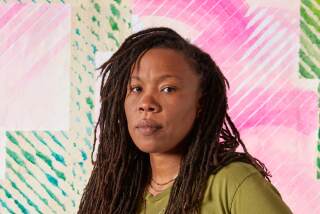NONFICTION - Jan. 1, 1995
- Share via
MARJORIE CONTENT by Jill Quasha. (Norton: $29.95; 159 pp.) Marjorie Content began photographing in the 1920s, her own twenties and thirties, after seeing the paintings and photographs exhibited in the photographer Alfred Stieglitz’s New York Gallery, then called An American Place. She became friends with Stieglitz and O’Keefe and their circle. This is the first time that anyone has combined pieces of her life story with her photographs, and I suspect it will not be the last. On first viewing the photographs (a little muddy in their reproduction but on nice heavy paper), one cannot help but see the influence of Stieglitz and Co., in subject matter, composition and developing technique. It’s New York and New Mexico, strong faces of artists and Native Americans, calla lilies, and even a few immediate knock-offs of Stieglitz’s famous equivalent series (photographs of clouds). But then you read that she was one of those people to whom artists flocked, for conversation, a place to stay, different kinds of nourishment. She was devoted, you read, to her four husbands, three of whom were artists: the Harlem Renaissance novelist Jean Toomer, the painter Michael Carr and the poet Leon Fleischman. Then, when you look at her photographs again, it becomes less a question of who she imitated than whose sensibility she adopted and sympathized with, whose vision she took on in that photograph. And the portraits have a kind of recklessness that may have been her own; the photographs of the grand canyon are sweeping and mysterious.
More to Read
Sign up for our Book Club newsletter
Get the latest news, events and more from the Los Angeles Times Book Club, and help us get L.A. reading and talking.
You may occasionally receive promotional content from the Los Angeles Times.








